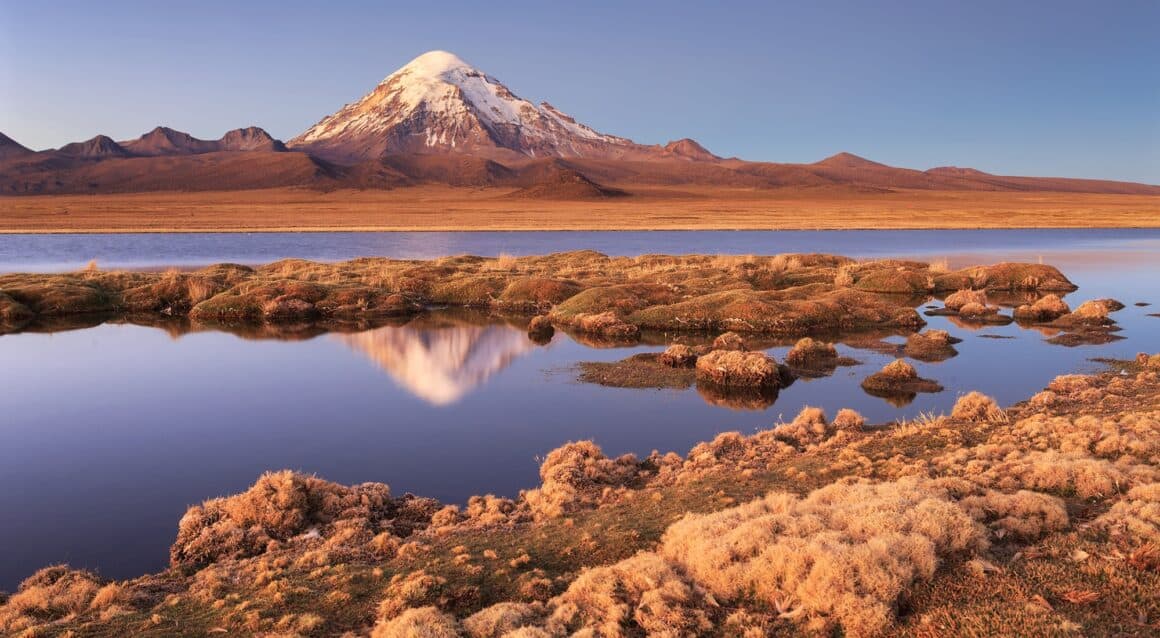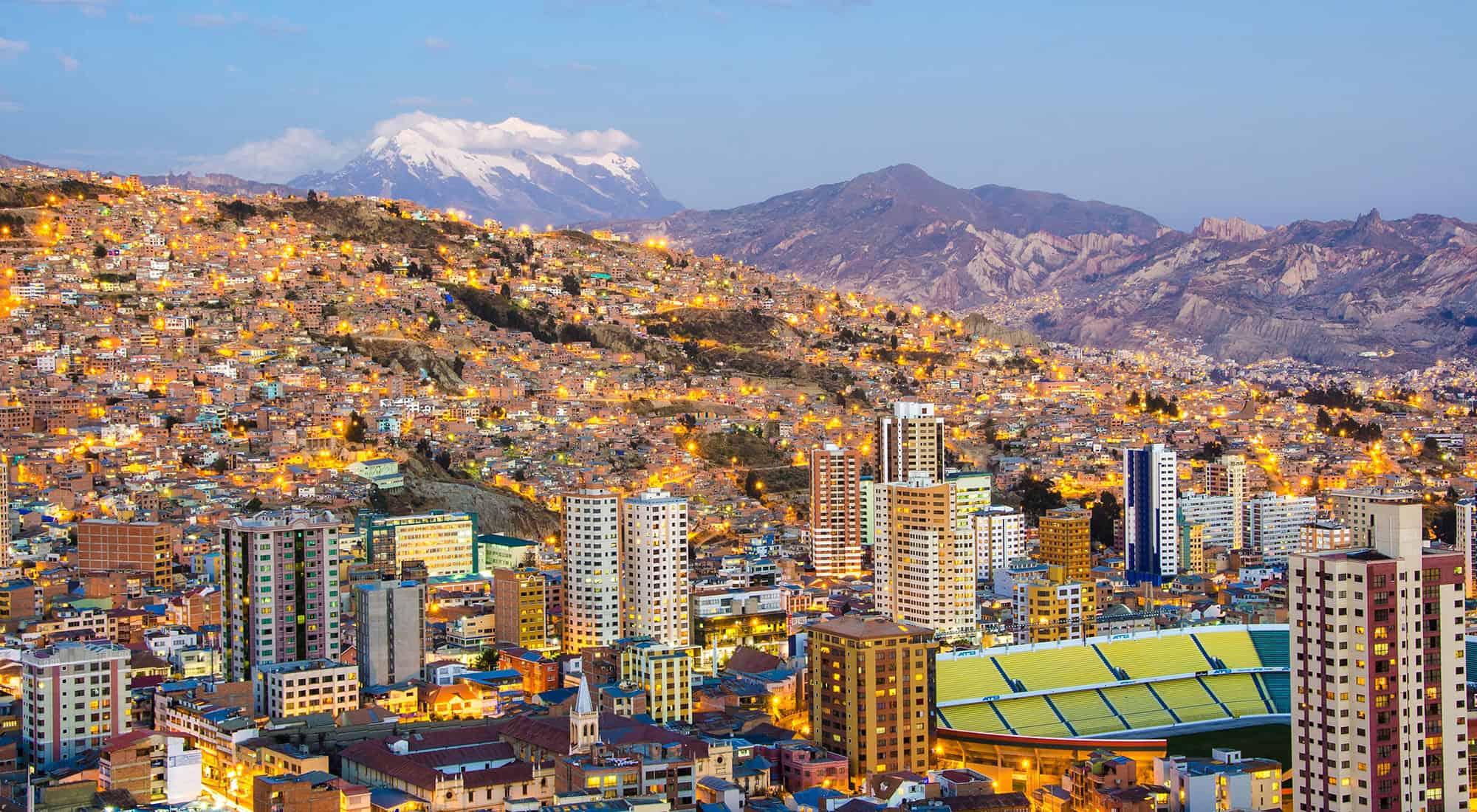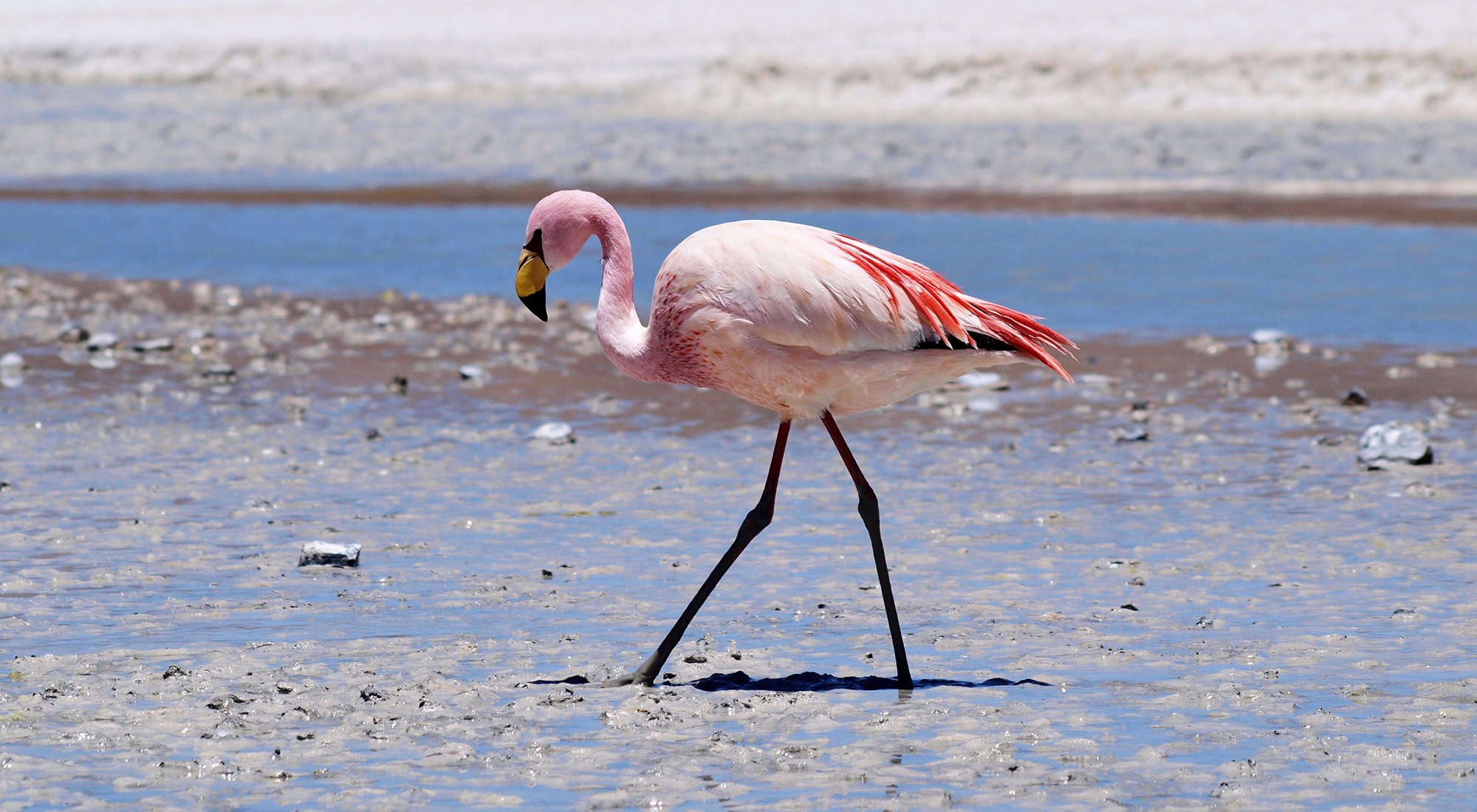Eduardo Avaroa
This 714,745-ha reserve protects a series of magnificently unusual coloured lakes, as well as high-altitude geysers and diverse fauna. Ninety-six species have been recorded here, including 69 types of bird. Most notable are the three species of flamingo, coots and the suri (rhea); all best seen from November to January. Among the mammals are the vicuña and the titi (Andean cat). The flora includes stands of queñua (polylepis) trees, yareta cushion plants, and tholar (an aromatic shrub).
Madidi
Bolivia’s premier jungle destination, Parque Nacional Madidi may be the most biodiverse of all the protected natural areas on earth. It is the variety of habitats that accounts for the array of flora and fauna in the park. In 1,895,750 ha, are an estimated 4750 species of plant, 900 bird species, 10 species of primate, five species of cat (with healthy populations of jaguar and puma), giant anteaters and many reptiles.
Sajama
Created in 1939, this is Bolivia’s oldest national park. Ranging in altitude from 4200 m to over 6500 m above sea level, it protects 100,230 ha of high-Andean flora and fauna and is home to Nevado Sajama, the country’s highest peak at 6542 m. The fauna includes vicuña, quirquincho (armadillo), puma, suri (rhea), condor, flamingo and coot. The scenery is magnificent: an impressive array of snow-capped volcanoes, as well as lakes, geysers and thermal springs.
Torotoro
Parque Nacional Torotoro is highly recommended for adventurous travellers. It is a huge hanging valley (16,570 ha) at 2700 m, surrounded by 3500-m-high mountains. The park is riddled with dinosaur tracks and bones, and punctuated by dizzying drop-offs into deep canyons. You can climb down into one of the canyons and clamber over boulders along the river until a sunny swimming hole appears next to a shimmering waterfall. Geologists, palaeontologists, archaeologists and botanists have all carried out studies here.
Apolobamba
Area Protegida Apolobamba is one of Bolivia’s finest trekking venues as well as home to the famed Kallawayas, Bolivia’s ancient medicine men. It contains the Cordillera Apolobamba, known for its snow-capped mountains, crystal-clear lakes and glaciers, and includes other ecological zones such as the altiplano, grasslands, subtropical Yungas and unique Cela rainforest. Established to preserve dwindling herds of vicuña, it is also home to condors, as well as domestic alpacas and llamas.
Noel Kempff Mercado
Parque Nacional Noel Kempff Mercado is remarkable for its Amazon forests, spectacular waterfalls and eerie-looking flat-topped mountain ranges called mesetas – thought to have inspired Arthur Conan Doyle’s The Lost World. Seven ecosystems, with over 620 bird species have been identified here, which is approximately one-quarter of all the birds in the neotropics. Its impressive biodiversity has so far been protected by sheer isolation.










